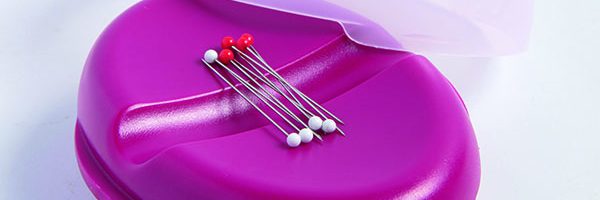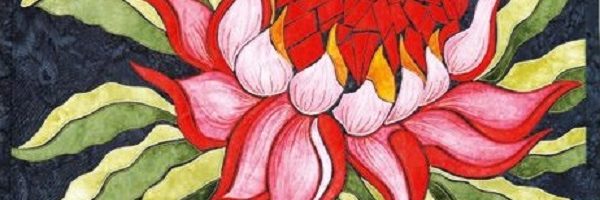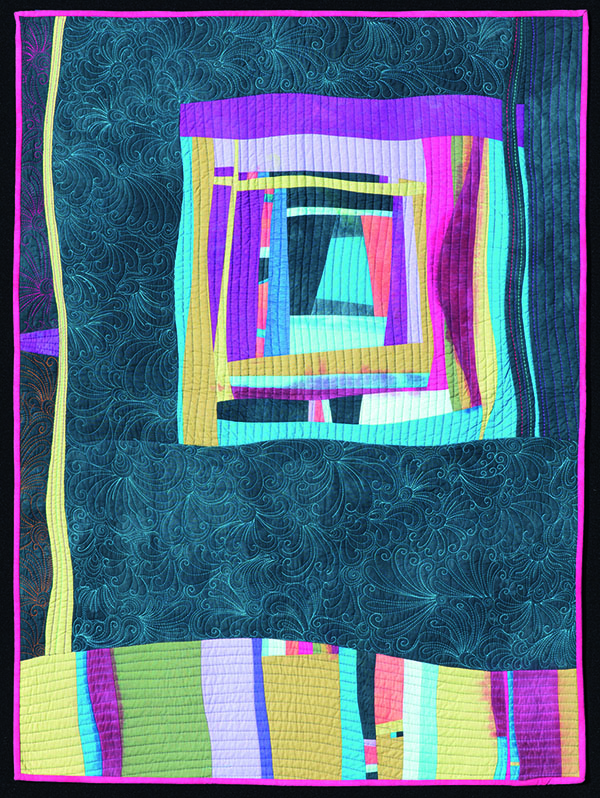
Quilting Advice from Deborah Louie: Hook Feathers
By Deborah Louie
If you have been free-motion quilting, you have probably thought about including feathers in your quilting repertoire. Feather quilting is the most elegant and impressive of all the free-motion designs in my opinion. It suits formal, modern, contemporary and traditional quilts equally.
I will be showing you the most popular styles and how and where to apply hook feathers to your quilts on your domestic sewing machine. Keep in mind that there is a big difference in how we go about quilting feathers on a domestic machine compared to a long arm machine. As domestic machine quilters, we quilt top to bottom; long arm machines quilt from left to right and back again. Very different indeed. Domestic quilters move the quilt, while long armers move the machine.

In my opinion the hook feather is the easiest to try when you first venture into the world of feathers. Hook feathers have no backtracking over previous stitching. Try and relax when you are quilting — we judge our work too harshly sometimes. One thing I have come to terms with is that we all have our own individual style when free motion quilting. Like handwriting, it is unique to the individual. Likewise, your feathers will have their own look.
Create and design your own bags!
A number of years ago, I attended some classes on feather quilting in Salt Lake City, Utah. All the tutors had their own unique style, but I thought my feathers had to look like everyone else’s. I was mistaken and after that experience I relaxed and found my own technique. In this article I will showcase hook feathers in blocks, sashings and borders.
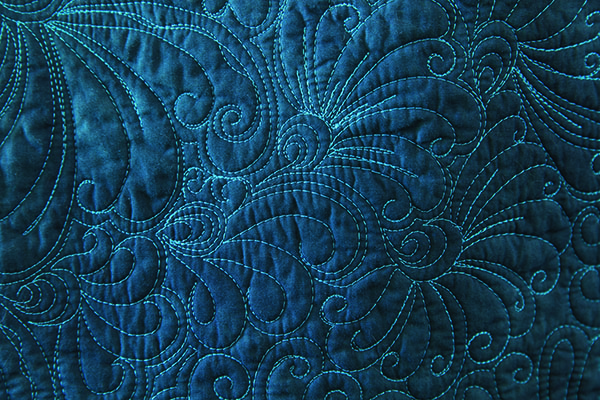
Set your sewing machine to free motion quilting, darning/open toe free-motion foot on, feed dogs dropped and stitch length to 0. Place a 50-weight cotton thread in the top and bobbin. Take any solid-colour homespun and sandwich with batting of your choice. Note the medium to high loft battings will give more poplar rise to your feathers. I use and recommend Matilda’s Own wool/polyester batting. Set the machine to slow/medium speed as you shouldn’t rush this — slow hands and slow needle. When you are more confident, speed up the needle and your hands.
First let’s draw the shape to understand the angles and how the hook is formed. Draw two lines two inches apart, then add a soft curved line inside these lines. This is our spine of the feather. Now draw a cross, centred at the bottom.

Draw three loops left #1, right #2 and bottom #3 of the cross. These loops will be an approximate guide for the 30-degree angle we need.

Draw an upside-down hook at the top of the #2 line and stop the needle

Then come back around over the top of your first hook, meet the centre spine and stop the needle.

Shoot off for another hook but try not to hit this new hook on the first feather. Leave a small gap of about 1/8th of an inch. Stop the needle … this will vary later once you start to experiment.
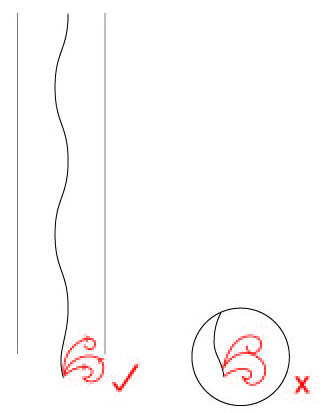
Travel back to complete the hook feather, up and over back again to the spine.

Continue all the way to the top of the spine.Once at the top, make a small movement of your fabric to create close, anchoring stitches. Lift the foot and needle, cut off threads.
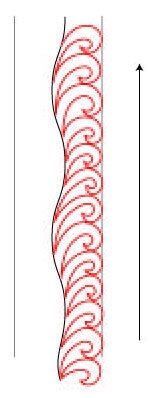
Start again at the bottom. You will get the first hook shape from the left-hand loop now. Repeat the technique used to create the hook feathers on the right, in mirror image, all the way to the top.
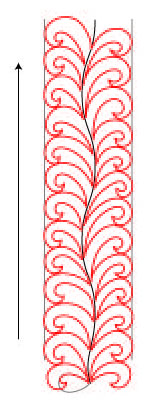
As the curve gently goes left and right, the feathers on the closer side will be smaller and the other side slightly larger. Don’t worry too much at this stage to match up left and right sides to meet at the spine — that will come with practice if that is the look you are after. Or you could make marks at equal distances up the spine if you wish for regular distances. Personally, I prefer the organic, uneven style of different shapes and sizes.
When you are ready to start your quilted sample, draw up the 2in strip on your fabric and mark in the centre curve spine. It is possible to mark your centre spine using a wave-edge Perspex ruler if you have one handy. Draw in the three loops at the bottom.
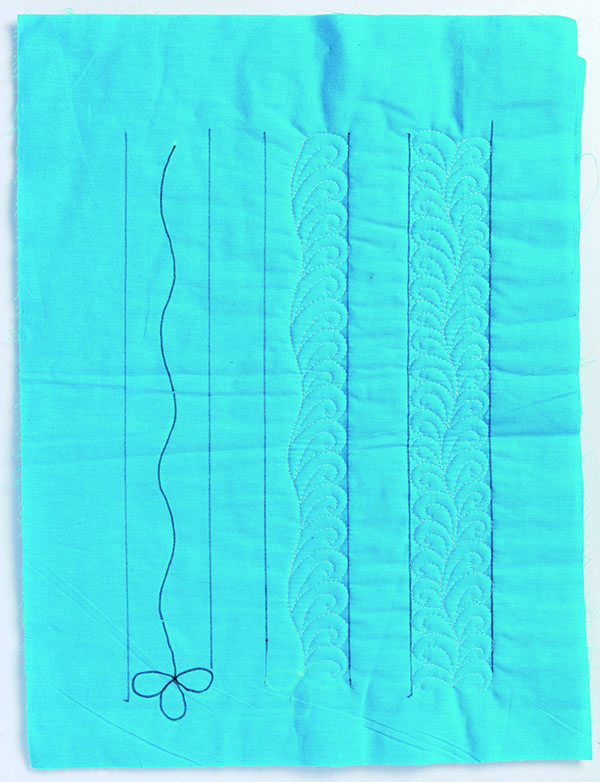
On the right hand side, bring up the bobbin thread to the top and while stitching, move the fabric slightly to anchor the start. Then stitch your first hook, stop, follow through back to the spine, and continue all the way to the top. Here, end off with tiny stitches again, cut threads top and bottom. Bring needle back to the bottom again and work the other side all the way to the top. Don’t try to stitch down from the top as this will feel very uncomfortable. These feathers flow up so they need to be stitched up, bottom to top.
Combine english paper piecing with wool appliqué!
When you are feeling confident, try stitching both sides at the same time — right hook following back, left hook following back, all the way to the top. It takes time to find the right needle speed, and making small, smooth stitching with your hands. Don’t give up after the first row — keep stitching those initial hook feathers and after a while you will start to feel more comfortable. When you feel ready, make the lines further apart so that your feather plumes will be longer.
What about using hook feathers in small blocks? We can come up with all kinds of looks. Why not start at the centre bottom of a small block and hook left and right, hooking both side as you travel. This sample has no spine at all.
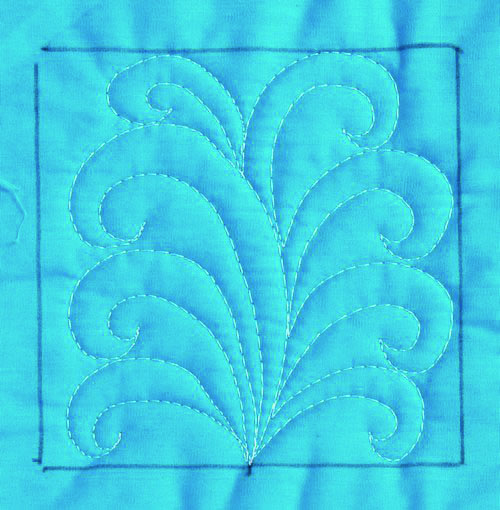
Or perhaps start at the right top corner and travel diagonally to the bottom left corner. Work to the top on one side, stitch another spine parallel to the bottom again and hook the other side.
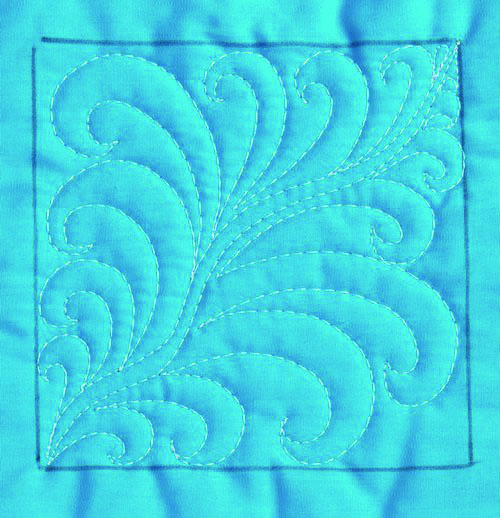
On a 4-patch block, you could start in the centre point of the squares. Hook left, then hook right for the top two squares until they are filled. Repeat the process for the lower two squares to fill the remainder of the block.
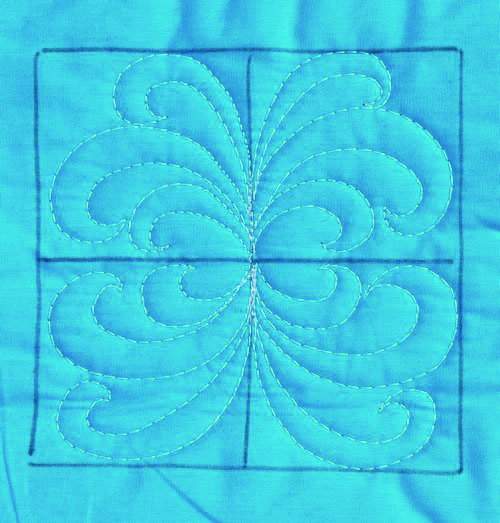
If the block is made from four triangles, you can hook a large feather in the triangles and stitch a smaller, thinner hook feather over the seams.
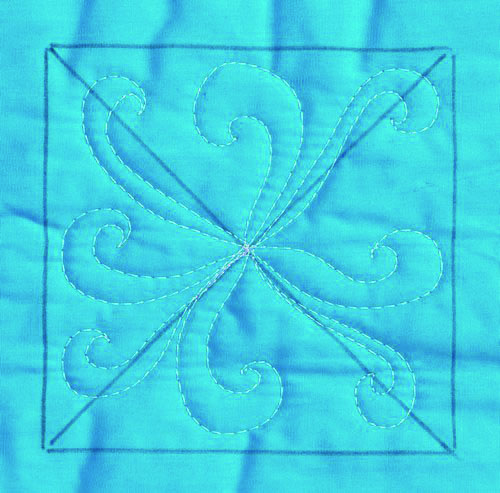
For the triangular block, I have stitched a curvy spine from the top to the bottom. Then, working from the bottom, I stitched to the top again, creating hooked feathers on the left side of the spine, both large and small. When I finished off, I came back again to the bottom and hooked up to the top, this time on the right.
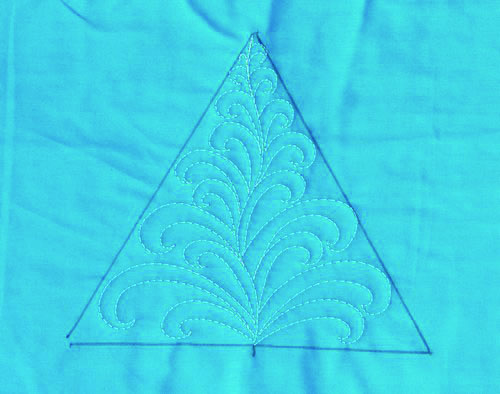
For the all-over background filler hook feather flowers sample, I started with a 4in Perspex circle. I traced around the outside and also marked in the eight segments of the circle. This was so that I could work out the approximate size these hooks needed to be to fill the space. The hook feathers are stitched in a clockwise direction. This was the starting point for the background fill. Once a complete circle has been quilted, a line of quilting takes off from the centre, between hooks, and a spiral centre is stitched. The hook feathers flow around the new centre in a variety of sizes, depending on the space that needs to be quilted. If it is required, add a line (shadow) around some of the hook feather flowers to get to the new empty space on your quilt. You might be able to see I have chalked in the first two circle shapes just to start me off, then away I went, enjoying the organic look of the different-size hook feathers.
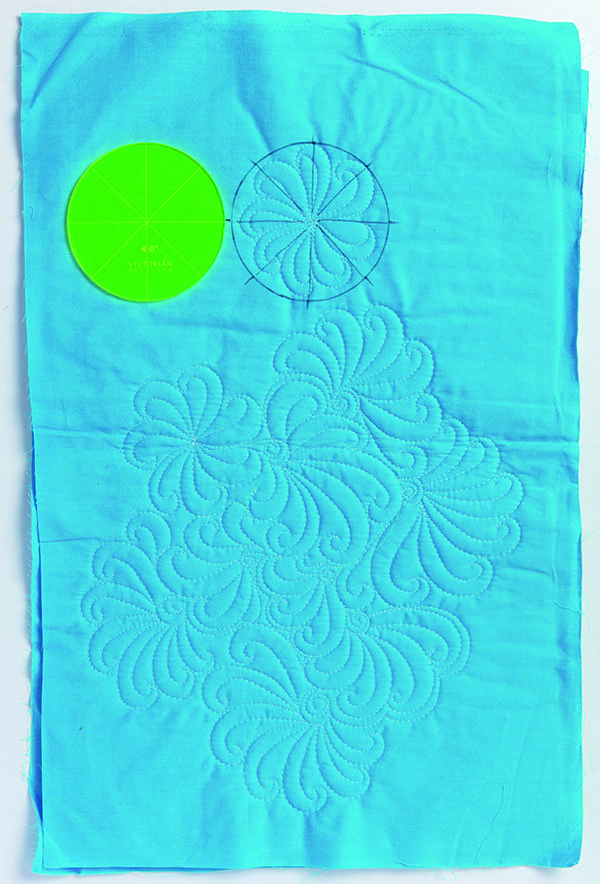
Learn how to make a fabric collage, thread sketch and free-motion machine quilt!
My contemporary quilt has a mixture of hook feathers as a background fill in the solid areas. It is complemented by the large, straight stitching in the free-form piecing. A nice contrast I think.
Relax and enjoy hook feathers — you never know, you might surprise yourself! Broken down, step-by-step, they really are easy.
Happy quilting
X Deb
To see more of Deborah Louie’s work, visit www.deborahlouie.com.au

